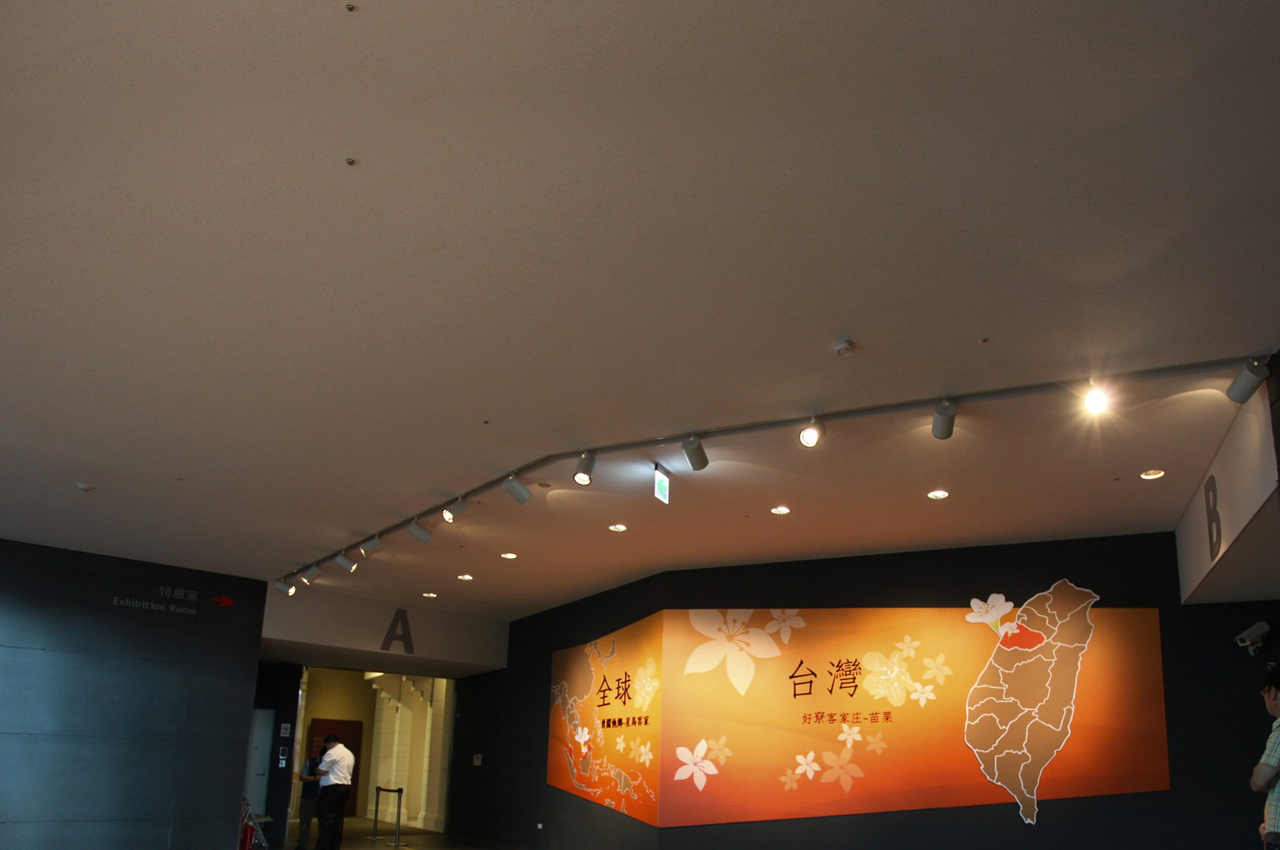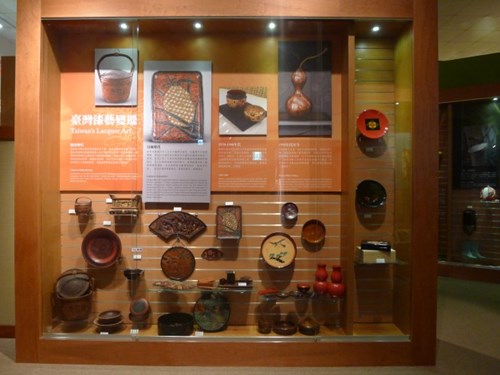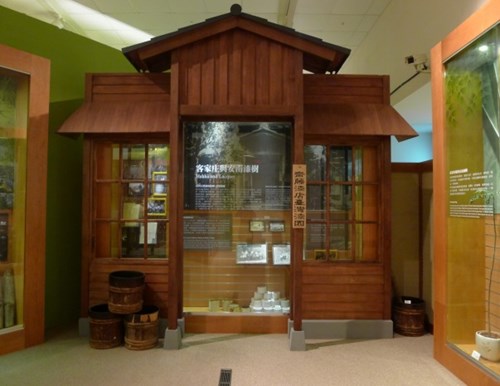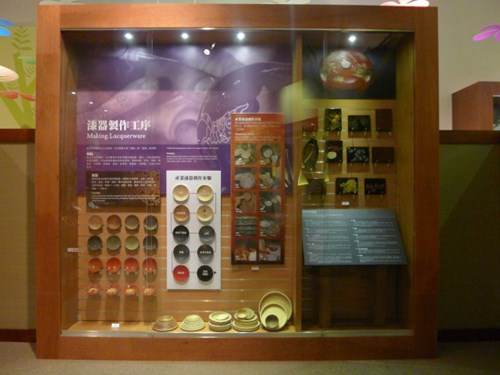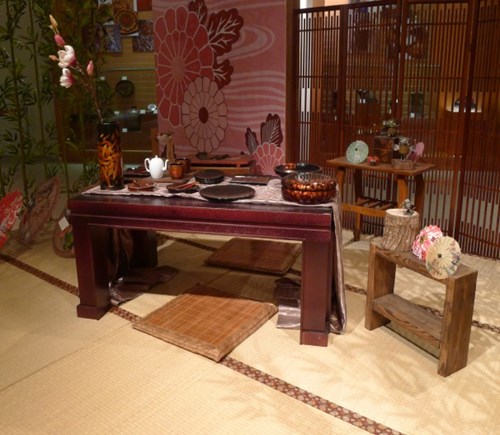Exhibition Review
4th Special Exhibition Hall: Possession of Rich Hakka – Special Exhibition of Lacquerware Industry
Source:客家文化發展中心
Publication Date:2012/12/23
Last updated:2022/11/16
Hakka people were not only pioneers in Taiwan’s natural lacquer industry but also laid the foundation for Taiwan’s lacquer art industry. In recent years the lacquer art industry with guidance from the Hakka Affairs Council has developed products that incorporate Hakka cultural features, which have been well received.
The exhibition “Possession of Rich Hakka – Special Exhibition of Lacquerware Industry” through tracking the origins of Taiwan’s natural lacquer industry not only recreates that heyday of the natural lacquer industry in Hakka areas but also shows in many ways the richness of the Hakka lacquerware industry.
- Changes in Taiwan Lacquerware
– Ming and Qing dynasties: The early immigrants to Taiwan mainly imported lacquerware for daily use from the Fujian and Guangdong areas of China, for example painted furniture, offerings baskets and tea trays. There were also carpenters from Fuzhou in Taiwan who made dry paint for furniture finishes.
– Japanese colonial era: The Japanese in 1921 introduced the Japanese Hazenoki or wax tree (Toxicodendron succedaneum) to Taiwan and encouraged the people of Tongluo Township in Miaoli to cultivate it. This period also saw the emergence of Taiwan’s distinctive Penglai lacquerware, which became an important “industry and travel” publicity product in the Japanese colonial era.
– 1950s to 1980s: The postwar period up to the 1980s was the heyday for Taiwan’s lacquerware exports. Over 90% came from the Fengyuan area of Taichung, which saw Fengyuan acquire the nickname of the “home of Taiwan’s lacquerware industry.”
– 1990s to present: Since the 1990s, the government has actively promoted the study and passing on of the lacquerware craft. Many lacquerware artisans have developed all kinds of related creative and cultural products, working hard to increase its aesthetic value and bring back the elegance of Taiwanese lacquerware.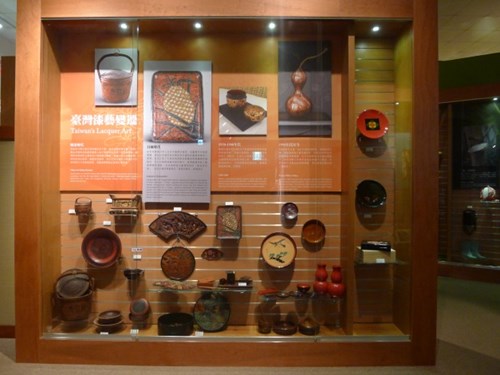
- The Home of Natural Lacquer: Tongluo, Miaoli
From the latter days of the Japanese era up to the 1960s, Tongluo Township in Miaoli County was the biggest lacquer-producing district in all of Taiwan, with a cultivation area of lacquer trees of up to 1,000 “kap” (equivalent to hectares). At that time, in order to manage and ship the product, the Taiwan Lacquer Company’s Tongluo Lacquer Refining Plant was opened, which now houses the Long Nan Museum of Natural Lacquer Wares.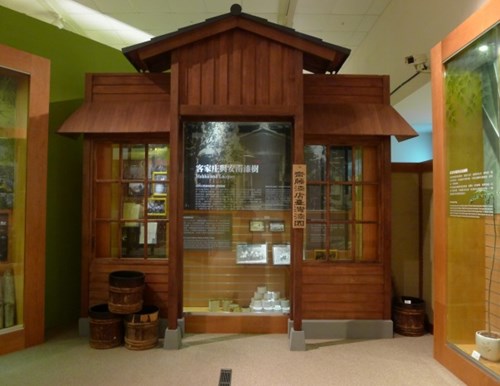
- Extracting Lacquer in the Dead of Night
To extract lacquer, a V shape is carved into the tree trunk, then a shell is inserted below the bottom edge of the V to collect the liquid. To prevent the liquid lacquer becoming dried up by the sun, the extraction would always be carried out at 2 or 3 am, stopping before the sun came up. - Traditional Lacquerware Making
The traditional process of making lacquerware can be simply divided into two steps: “making the main body” and “painting.”
1). Making the Main Body: Many materials can serve as the main body for lacquerware; common materials include wood, bamboo, rattan, ceramics, metal and cloth.
2). Painting. The process of building up base layers, brushing, scraping, patching, painting, grinding, rubbing and polishing, before finally adding surface decoration techniques, often needs 30 or more processes before completion.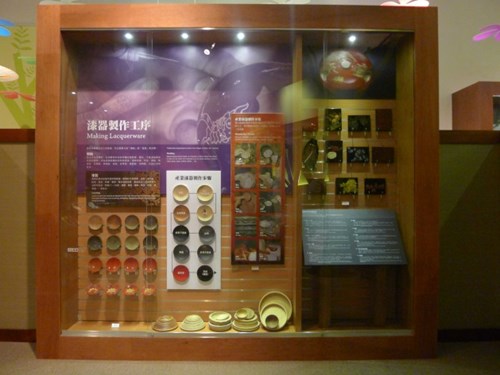
- The Beauty of Lacquer Art
Taiwan’s lacquer artware began to take root in the Japanese colonial era. The early period lacquer artist Chen Huo-ching was a crucial figure in establishing Taiwan’s lacquerware industry, and also in passing on and promoting Taiwan’s lacquerware. One who inherited Chen’s legacy was Huang Lee-shu, who specialized in using the natural bamboo and wood materials abundant in Taiwan to create exquisite lacquerware products for practical use. There were also the lacquer artists Peng Kun-yen and Hsu Yu-ming, who in addition to passing on traditional layering and carving techniques, also incorporated modern aesthetic concepts, and whose works have often been invited to be exhibited domestically and internationally.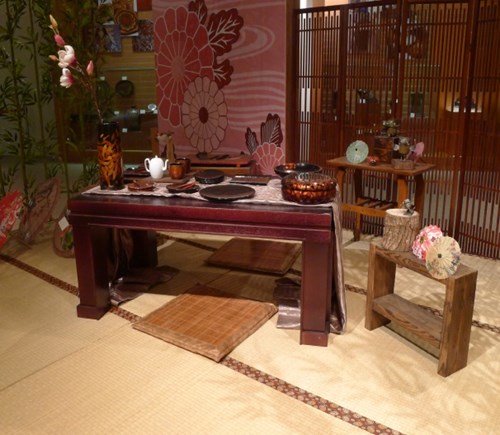
- Lacquerware’s storage environment should avoid excessive differences in temperature to prevent the lacquer layers and main body from undergoing excessive shrinkage, leading to cracking or deformation.
- Lacquerware should be guarded against being scratched by sharp or rough objects, or by external impact.
- When cleaning lacquerware, use materials like sponges and soft cloth; avoid the use of scouring pads that can scratch the paint.
- If lacquerware has difficult to clean oil stains, use cleaning fluid or soak in warm water for a few minutes, then lightly wipe with a sponge or soft cloth (it is not recommended to use a dishwasher or dryer).
